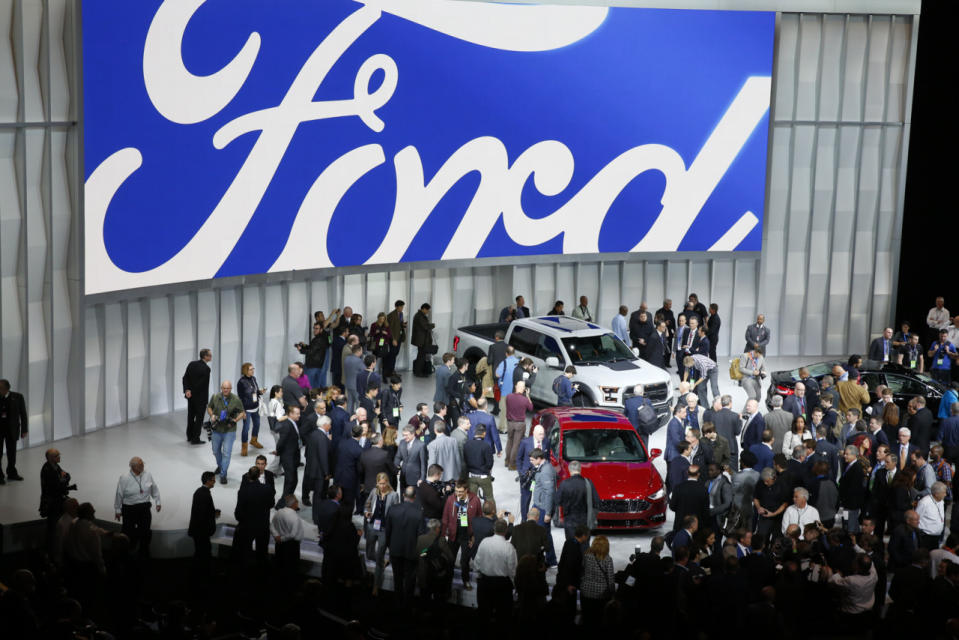Panic In Detroit? No, We’re Busy Disrupting Ourselves
For an industry hitting record profits and selling more new cars than ever, this year’s Detroit auto show was filled with worries about who will control the future of the car—and not enough big new models to silence those doubts.
Nothing came close to last year’s blockbuster reveals of the Ford GT and Acura NSX. The most newsworthy car of the show—the production Chevy Bolt EV—had its reveal a week earlier at the Consumer Electronics Show in Las Vegas. The parade of high-volume launches was a short one: the Chrysler Pacifica, GMC Acadia, Mercedes-Benz E-Class and the front grille of the Ford Fusion. Everything else was either a low-volume niche vehicle or a concept that can barely move on its own power.

Maybe that’s because the very idea of having to gather in one place to look at a bunch of new cars is coming to an end—especially when that place is sub-freezing Detroit in January. Maybe that’s because many of the innovations in the auto industry now come from the software inside the car, or the apps on your smartphone. And maybe, just maybe, that’s because in an increasingly crowded and urbanized world, personal transportation has become less an expression of style and freedom and more of a nagging life problem that needs solving.
The dominant idea of this Detroit show was automakers trying to show they’ll be the ones to solve the future. Examples ranged from General Motors buying a $500 million stake in Lyft and designating it as the future buyer of autonomous vehicles, to Toyota’s main reveal of a prototype data antenna for streaming satellite internet into its cars. Ford even launched an app, FordPass, that “aims to do for car owners what iTunes did for music fans.” (I hope that doesn’t mean I lose the car I know I bought, and wake up one morning to find U2 in my driveway.)
Among the freshest cliches this year was “the car is the largest mobile device” and “we’re disrupting ourselves.” Yet the best models of the show were the ones that focused on satisfying traditional needs of mobility rather than the disruptive. Like Chrysler flexing its understanding of family hauling challenges by filling the Pacifica minivan with nine USB ports, or the Lincoln Continental reviving the tufted-pillow luxury seats last seen when Jimmy Carter left office. As show cars go, the Buick Avista coupe nailed the line of looking as if it could drive off the stand and into a showroom. The Lexus LC 500 is just that, a 467-hp full-size coupe that Powerball winners can pick up for a mere $100,000 in a matter of months. (The dealer might even throw in the car-sized bow for free.)
Automakers have long been jealous of the way Apple launched its products, and increasing stage their own mini-auto shows rather than having to pay millions of dollars for splashy presentations only to be glossed over in a roundup story like this one. If they’re going to transform themselves into mobile device makers and “mobility providers,” it only makes sense to do as other tech companies do. Just watch out for the disruptions ahead.

